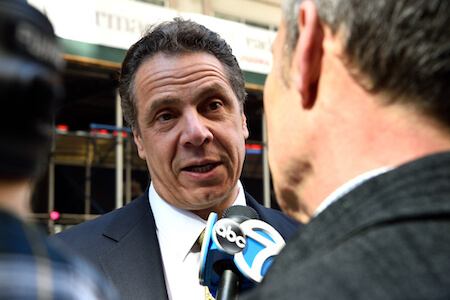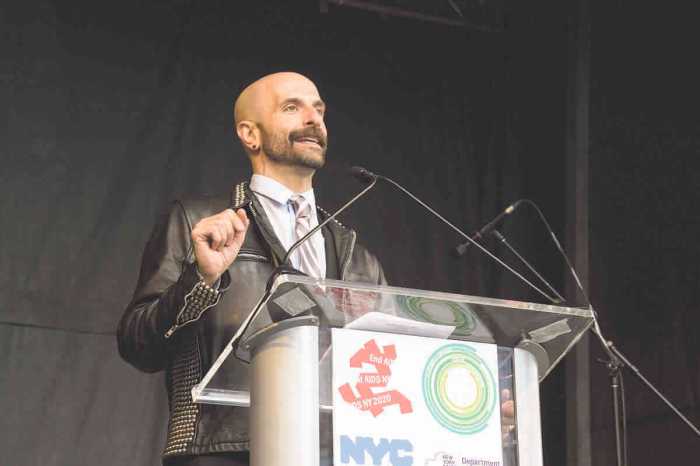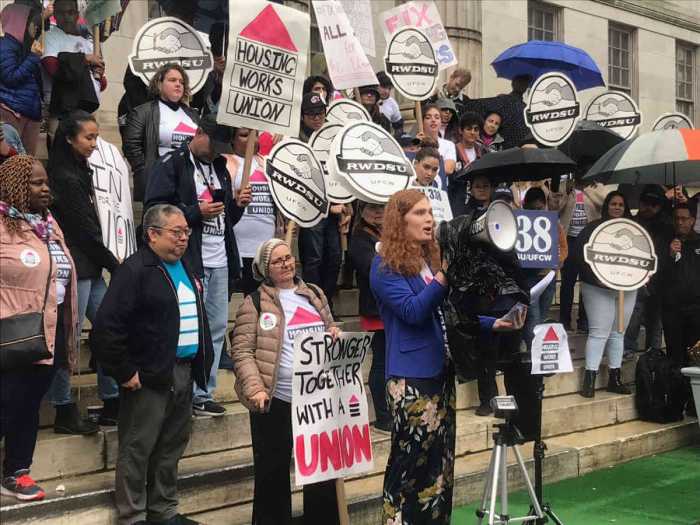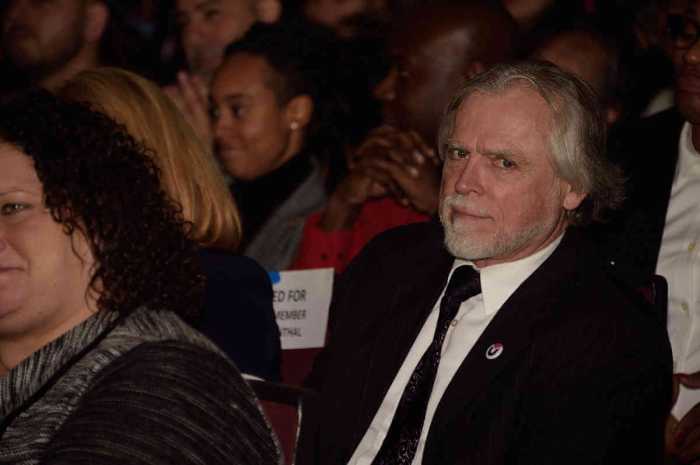Governor Andrew Cuomo is currently working with legislative leadership to flesh out details of a $2 billion housing plan. | DONNA ACETO
Proponents of New York’s Plan to End AIDS are pressing Albany to include millions for supportive housing for people with AIDS in a memorandum of understanding that will detail how $2 billion in spending for housing proposed by Governor Andrew Cuomo will be spent.
“We’re optimistic that there will be money in there for the housing initiatives,” said Ginny Shubert, principal at Shubert Botein Policy Associates, a consulting firm. “That’s definitely what we’re hoping for.”
In his January 13 proposed budget for the state fiscal year that began on April 1, Cuomo called for spending $20 billion over the next five years to combat homelessness. There was a $2 billion down payment on that proposal in the budget. The Cuomo administration, Assembly Speaker Carl Heastie, and State Senate Majority Leader John Flanagan are negotiating the memo that will define how that money is spent.
Cuomo negotiating spending details with legislative leaders ahead of June adjournment
“We are continuing to discuss the MOU and there is no agreement yet, but the component to end AIDS is strongly supported by the Assembly Majority,” a spokesperson for Heastie wrote in an email.
Flanagan’s office did not respond to a request for comment. The current legislative session ends in mid-June.
The Plan to End AIDS aims to reduce new HIV infections in New York from the current roughly 3,000 a year to 750 annually by 2020. The plan uses anti-HIV drugs in HIV-negative people to keep them uninfected and it treats HIV-positive people with similar drugs so they are no longer infectious.
In addition to using anti-HIV drugs, plan proponents argue, with the backing of some science, that providing HIV-positive people with stable housing, nutrition, transportation, and other services makes it far more likely that they will adhere to their medications and have an undetectable amount of HIV in their bodies, a status that effectively means they cannot infect others.
Out of the $2 billion under discussion between the governor and legislative leaders, advocates are asking for $50 million from the state. Of that amount, $33 million would be spent on expanding housing and services for people with HIV in New York City and $17 million would pay for such housing and services upstate. Over 90 percent of the new HIV infections in New York are in the New York City.
“It’s in the budget,” Shubert said. “There’s going to be a memorandum of understanding about how to allocate it. That will be done by the end of the session. The good thing is we got them to talk.”
The city’s HIV/ AIDS Services Administration (HASA) currently serves only people with an AIDS diagnosis, an advanced stage of HIV infection. For nearly a decade, advocates have sought to expand the services HASA offers to anyone who is financially eligible and HIV-positive.
With more people with HIV taking powerful anti-HIV drugs, AIDS diagnoses are increasingly rare though they still occur. This has meant that some people who are HIV-positive who need HASA services cannot get them. Last year, the de Blasio administration endorsed city legislation, which Shubert helped write, that would allow financially eligible HIV-positive people to access HASA services, but that support was contingent on the state paying part of the cost.
“We continue to hope the state will be a partner with the city in providing support for supportive and affordable housing for New Yorkers,” Karen Hinton, Mayor Bill de Blasio’s press secretary, wrote in an email to Gay City News.
Cuomo first endorsed the Plan to End AIDS in 2014. He then organized a 63-member task force, which included every leading AIDS group in the state, to write the plan. He accepted the plan at a very large public ceremony in 2015. Since then, he has consistently underfunded the plan in the state budget. At first, AIDS groups were publicly polite.
“Basically, we’re trying to strike a fine balance between vigorous and relentless pressure with even handed patience,” Mikola De Roo, a spokesperson at Housing Works, an AIDS services group, wrote in a March 2015 email that was among documents obtained by Gay City News in a Freedom of Information request made to the city’s Office of Management and Budget. “There will be plenty of opportunities in coming weeks and months to turn the heat up more and hit the Governor harder and for the harder punch to be far more effective than it would be right now.”
Charles King, the chief executive at Housing Works, is credited with devising the plan, along with Mark Harrington, the head of the Treatment Action Group, an advocacy organization. King co-chaired the task force and has been the plan’s leading champion.
Protests about the state dragging its feet have grown increasingly loud since last year, culminating in a days-long occupation in March of an office near Cuomo’s in Albany during the run up to the start of the state fiscal year. The protest was organized by VOCAL-NY, an AIDS group.
In mid-May, Cuomo introduced legislation that would enact other provisions of the Plan to End AIDS, such as expanding HIV testing and allowing pharmacies to distribute anti-HIV drugs that keep a person with a recent exposure to the virus from becoming infected without a prescription.






































